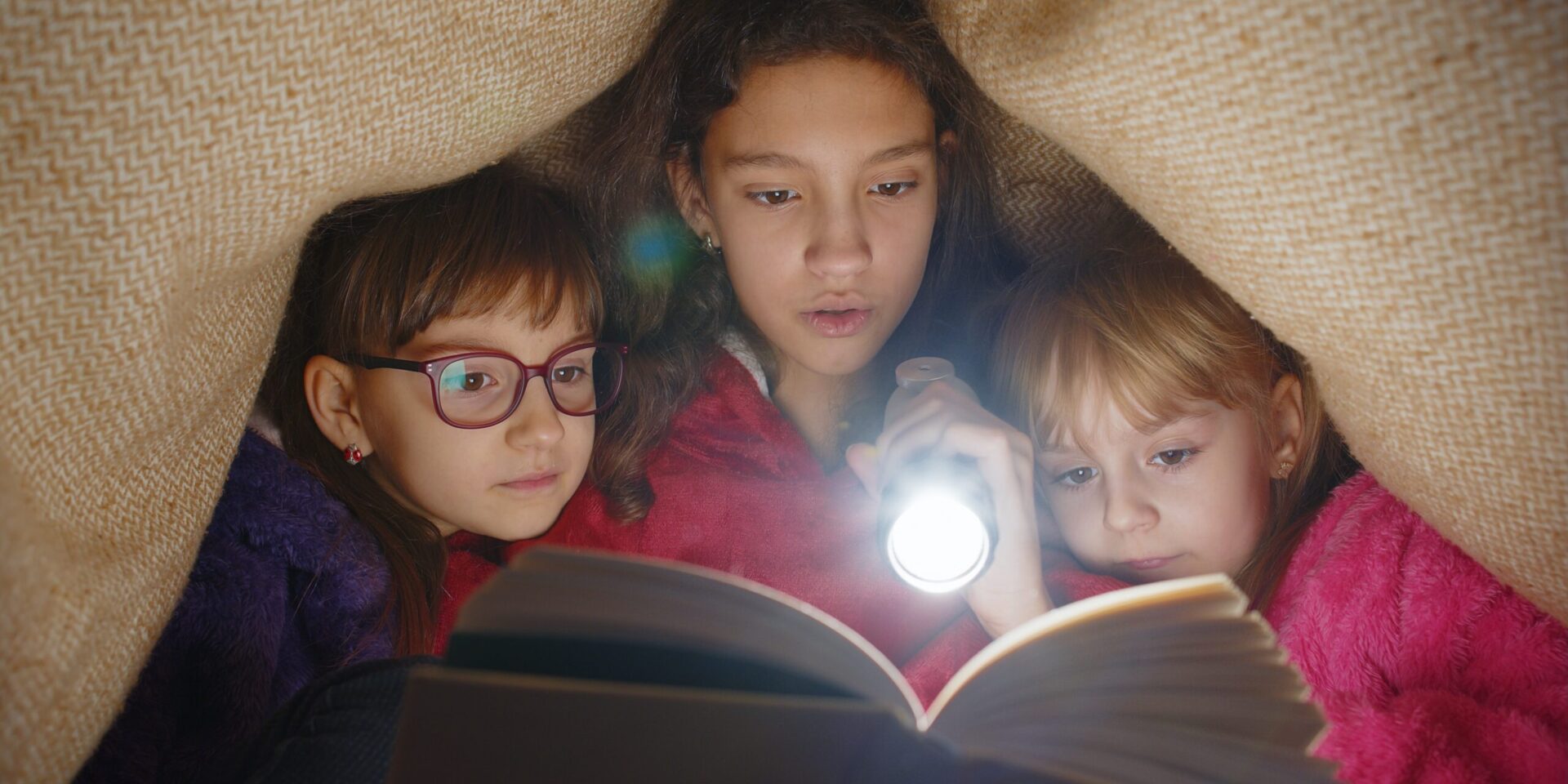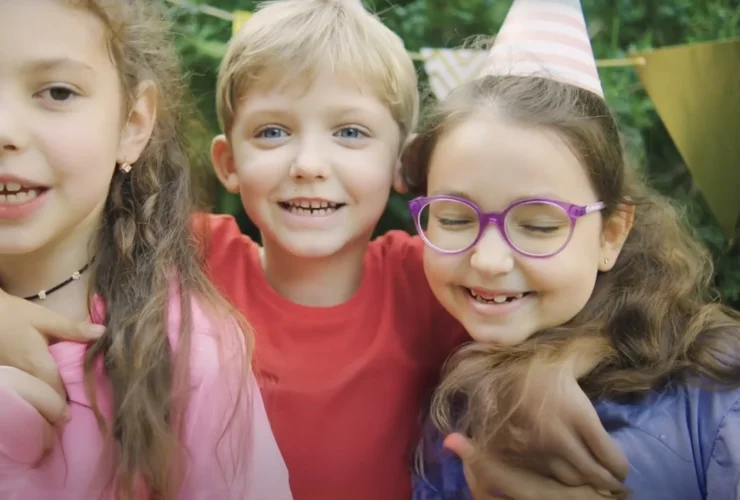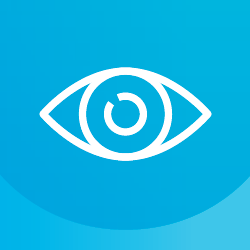Myopia, or nearsightedness, has become increasingly common in children, with about one in three now affected. This rise in vision problems can impact a child’s ability to see clearly at school, during activities, and in everyday life. At Modern Vision Solutions, we understand the importance of addressing this condition early to help preserve your child’s vision. We provide expert care and personalized myopia control solutions to manage and treat nearsightedness. Schedule an appointment today for a consultation to explore the best options for your child’s eye health.
How Common is Nearsightedness in Children Today?
Nearsightedness, or myopia, is now affecting more children than ever before, and it’s a growing concern for families around the world. According to a recent study published in the British Journal of Ophthalmology, one out of every three children is struggling with myopia. This statistic represents a sharp increase from just a few decades ago, where only 24% of children were affected by nearsightedness between 1990 and 2000. At Modern Vision Solutions, we have seen firsthand how this growing issue impacts children’s lives, from challenges in school to difficulty participating in sports and other activities. As this condition becomes more prevalent, it’s important for parents to be aware of the warning signs and seek timely interventions. Our team is dedicated to helping you navigate this journey and find the right solution for your child’s needs.

Will My Child Be Affected by Nearsightedness in the Future?
Unfortunately, the trend toward higher rates of myopia is expected to continue. According to the study, nearly 40% of children worldwide could be living with nearsightedness by 2050—that’s over 740 million children and teens. These projections can seem daunting, but early detection and proactive care can make a world of difference. At Modern Vision Solutions, we focus on providing personalized eye care that considers your child’s unique risk factors and lifestyle. By scheduling regular eye exams and monitoring vision changes, we can catch signs of myopia early and work with you to manage it before it becomes a larger problem. We are here to support your child’s vision needs today and into the future.

What Increases the Risk of Myopia in Children?
There are several factors that make some children more prone to developing myopia than others, including location, activity level, and even gender. The study highlights that children living in urban areas are more likely to experience nearsightedness compared to those in rural environments. In the United States, where many children engage in screen time and less time in natural environments, pediatric patients are seeing higher rates of myopia. Other contributing factors include gender (with girls slightly more at risk than boys) and age, with older children and teenagers (13-19 years) being more likely to develop myopia than younger children. At Modern Vision Solutions, we understand that each child’s environment and daily habits play a role in their eye health. If your child spends a lot of time on screens or indoors, they may be at higher risk. We can help you create a balanced approach to reducing risk factors while ensuring your child’s vision is protected.
Did COVID-19 Make Nearsightedness Worse for Kids?
The COVID-19 pandemic drastically changed children’s lifestyles, and this has had a clear impact on their eye health. During lockdowns, kids were spending more time indoors, often in front of screens, with less time spent outside. The study noted a significant spike in myopia cases due to these behavioral shifts, highlighting just how critical outdoor time and limited screen use are for maintaining healthy vision. At Modern Vision Solutions, we have noticed an uptick in nearsightedness among children post-pandemic, and we are committed to helping parents minimize some of these effects. Our eye care professionals can guide you on how to balance screen time with outdoor activities and provide regular eye exams to ensure your child’s vision stays on track.
What Can I Do to Help Prevent My Child from Developing Myopia?
The good news is that there are several steps you can take to help reduce your child’s risk of developing or worsening myopia. Encouraging outdoor activities is one of the best ways to protect your child’s vision—time spent in natural light has been shown to slow the progression of nearsightedness. Reducing screen time and making sure your child follows the “20-20-20 rule” (looking at something 20 feet away for 20 seconds every 20 minutes) can also help alleviate eye strain. At Modern Vision Solutions, we recommend regular eye exams as a key part of myopia prevention. Early diagnosis allows us to implement strategies that can help manage the condition before it becomes more severe. Schedule a consultation with our expert team today to learn how we can help preserve your child’s vision and keep their eyes healthy as they grow.
FAQ’s About the Increase in Childhood Myopia
What are the early signs of nearsightedness in children?
Early signs of nearsightedness, or myopia, can include squinting, holding books or screens too close, and complaining of headaches or eye strain. Early myopia symptoms may also include changes in visual perception, reduced visual acuity, and difficulty seeing distant objects, which could lead to visual impairment if left untreated. If your child is exhibiting any of these signs and symptoms, it’s important to schedule an eye exam as soon as possible. Modern Vision Solutions can provide a comprehensive evaluation to determine if your child is developing myopia and help you explore early treatment options.
Can nearsightedness in children be reversed?
While myopia itself cannot be reversed, its progression can be slowed with proper intervention. Regular eye examinations and vision therapy can help manage the condition and support patient outcomes over time. Treatment options such as specialized glasses, contact lenses, and lifestyle changes like increasing outdoor time have been shown to help manage myopia. At Modern Vision Solutions, we specialize in managing nearsightedness and offer personalized plans to slow its progression, ensuring that your child’s vision remains as clear as possible.
Why is nearsightedness becoming more common in children?
The rise in nearsightedness among children is linked to increased screen time, less time spent outdoors, and urban living. Modern lifestyles, particularly in developed countries, are seeing children engaged in more near-work activities like reading and using devices, which can contribute to myopia. At Modern Vision Solutions, we provide guidance on balancing lifestyle factors to help reduce the risk of myopia development in your child.
Is there a genetic link to nearsightedness in children?
Yes, genetics play a significant role in whether a child develops myopia. If one or both parents are nearsighted, the likelihood of their child developing the condition increases. However, environmental factors also contribute to myopia progression. At Modern Vision Solutions, we consider both genetic predispositions and lifestyle factors when assessing your child’s vision and can recommend personalized care to manage these risks.
What age does myopia typically develop in children?
Myopia can begin developing in children as early as age 6 and often progresses through adolescence. The condition tends to worsen during periods of rapid growth, particularly between the ages of 6 and 19. If you notice your child’s vision changing during this time, Modern Vision Solutions is here to provide early diagnosis and treatment to help manage the condition and preserve their eye health.
How does screen time affect nearsightedness in children?
Excessive screen time is linked to a higher risk of developing myopia in children. The strain from focusing on screens for extended periods can worsen nearsightedness, especially when combined with reduced outdoor activity. Whether it’s doing homework on a computer or playing video games, extended screen time has been linked to worsening myopia. At Modern Vision Solutions, we encourage parents to limit screen time and adopt practices like the “20-20-20 rule” to help reduce eye strain and preserve their child’s vision.
How does outdoor time help prevent nearsightedness in children?
Spending more time outdoors has been shown to reduce the risk of developing nearsightedness. Natural sunlight and looking at objects in the distance help protect against the progression of myopia. Spending time in natural environments, particularly outdoors, helps protect against the development of myopia. Modern Vision Solutions recommends increasing outdoor play and activities for children as a simple, effective way to support eye health and slow the development of myopia.
Are glasses the only solution for children with nearsightedness?
No, glasses are just one of several solutions for managing myopia. Depending on your child’s needs, contact lenses, especially those designed for myopia control, and lifestyle adjustments can also help. At Modern Vision Solutions, we offer a range of treatment options tailored to your child’s vision, including ortho-k lenses and other interventions designed to slow myopia progression.
Can nearsightedness cause other eye problems in the future?
If left untreated, severe myopia can increase the risk of other eye conditions such as retinal detachment, glaucoma, cataracts, and other eye diseases later in life. That’s why early intervention and regular monitoring at Modern Vision Solutions are so important. By managing myopia from a young age, we can help reduce the risk of future complications and safeguard your child’s long-term vision.
How often should my child have an eye exam if they are nearsighted?
Children who are nearsighted should have eye exams at least once a year, or more frequently if their condition is progressing rapidly. Regular check-ups allow us to monitor changes in vision and adjust treatment as needed. At Modern Vision Solutions, our expert optometry team works with patients to monitor visual acuity and ensure that treatment plans are adjusted as needed to support your child’s long-term vision health.
For more information about the studies referenced:
https://news.sky.com/story/one-in-three-children-short-sighted-study-suggests-13221701
https://www.cnn.com/2024/09/25/health/global-myopia-research-scli-intl-wellness/index.html
https://bjo.bmj.com/content/early/2024/08/14/bjo-2024-325427











